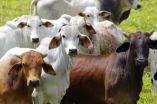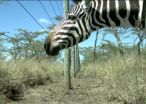(Press-News.org) Bottom Line: Children and young adults who start antidepressant therapy at high doses, rather than the "modal" [average or typical] prescribed doses, appear to be at greater risk for suicidal behavior during the first 90 days of treatment.
Author: Matthew Miller, M.D., Sc.D., of the Harvard School of Public Health, Boston, and colleagues.
Background: A previous meta-analysis by the U.S. Food and Drug Administration (FDA) of antidepressant trials suggested that children who received antidepressants had twice the rate of suicidal ideation and behavior than children who were given a placebo. The authors of the current study sought to examine suicidal behavior and antidepressant dose, and whether risk depended on a patient's age.
How the Study Was Conducted: The study used data from 162,625 people (between the ages of 10 to 64 years) with depression who started antidepressant treatment with a selective serotonin reuptake inhibitor at modal (the most prescribed doses on average) or at higher than modal doses from 1998 through 2010.
Results: The rate of suicidal behavior (deliberate self-harm or DSH) among children and adults (24 years or younger) who started antidepressant therapy at high doses was about twice as high compared with a matched group of patients who received generally prescribed doses. The authors suggest this corresponds to about one additional event of DSH for every 150 patients treated with high-dose therapy. For adults 25 to 64 years old, the difference in risk for suicidal behavior was null. The study does not address why higher doses might lead to higher suicide risk.
Discussion: "Considered in light of recent meta-analyses concluding that the efficacy of antidepressant therapy for youth seems to be modest, and separate evidence that dose is generally unrelated to the therapeutic efficacy of antidepressants, our findings offer clinicians an additional incentive to avoid initiating pharmacotherapy at high-therapeutic doses and to monitor all patients starting antidepressants, especially youth, for several months and regardless of history of DSH."
(JAMA Intern Med. Published online April 28, 2014. doi:10.1001/jamainternmed.2014.1053. Available pre-embargo to the media at http://media.jamanetwork.com.)
Editor's Note: Authors made a conflict of interest and funding disclosures. Please see the article for additional information, including other authors, author contributions and affiliations, financial disclosures, funding and support, etc.
Commentary: Initial Dose of Antidepressants, Suicidal Behavior in Youth
In a related commentary, David A. Brent, M.D., of the University of Pittsburgh, and Robert Gibbons, Ph.D., of the University of Chicago, write: "In summary Miller et al are to be commended on a thoughtful and careful analysis of the effects of initiating antidepressants at higher than modal doses."
"Their findings suggest that higher than modal initial dosing leads to an increased risk for DSH and adds further support to current clinical recommendations to begin treatment with lower antidepressant doses. While initiation at higher than modal doses of antidepressants may be deleterious, this study does not address the effect of dose escalation," they continue.
"Moreover, while definitive studies on the impact of dose escalation in the face of nonresponse remain to be done, there are promising studies that suggest in certain subgroups, dose escalation can be of benefit. Finally it should be noted that in this study, there was no pre-exposure to post-exposure increase in suicidal behavior after the initiation of antidepressants in youth treated at the modal dosage," they conclude.
(JAMA Intern Med. Published online April 28, 2014. doi:10.1001/jamainternmed.2013.14016. Available pre-embargo to the media at http://media.jamanetwork.com.)
Editor's Note: Authors made conflict of interest and funding disclosures. Please see the article for additional information, including other authors, author contributions and affiliations, financial disclosures, funding and support, etc.
INFORMATION:
Media Advisory: To contact author Matthew Miller, M.D., Sc.D., call Marge Dwyer at 617-432-8416 or email mhdwyer@hsph.harvard.edu. To contact commentary author David A. Brent, M.D., call Gloria Kreps at 412-586-9764 or email krepsga@upmc.edu.
High doses of antidepressants appear to increase risk of self-harm in children young adult
2014-04-28
ELSE PRESS RELEASES FROM THIS DATE:
Simply being called 'fat' makes young girls more likely to become obese
2014-04-28
Girls who are told by a parent, sibling, friend, classmate or teacher that they are too fat at age 10 are more likely to be obese at age 19, a new study by UCLA psychologists shows.
The study looked at 1,213 African-American girls and 1,166 white girls living in Northern California, Cincinnati and Washington, D.C., 58 percent of whom had been told they were too fat at age 10. All the girls had their height and weight measured at the beginning of the study and again after nine years.
Overall, the girls labeled fat were 1.66 times more likely than the other girls to be ...
UCLA research team selected to present original epilepsy research on Capitol Hill
2014-04-28
A graduate student in Semel Institute for Neuroscience and Human Behavior, and two of his undergraduate trainees, were selected by the Council on Undergraduate Research to present their original research on Capitol Hill in Washington, D.C., on Tuesday.
Wesley Kerr, whose graduate studies will be completed in the UCLA Department of Biomathematics, and his trainees, Akash Patel and Sarah Barritt, will present their poster entitled "Computer-Aided Diagnosis of Epilepsy Using Clinical Information" outlining advances in the use of computational machine learning to help clinicians ...
Mystery of the pandemic flu virus of 1918 solved by University of Arizona researchers
2014-04-28
A study led by Michael Worobey at the University of Arizona in Tucson provides the most conclusive answers yet to two of the world's foremost biomedical mysteries of the past century: the origin of the 1918 pandemic flu virus and its unusual severity, which resulted in a death toll of approximately 50 million people.
Worobey's paper on the flu, to be published in the early edition of the Proceedings of the National Academy of Sciences (PNAS) on April 28, not only sheds light on the devastating 1918 pandemic, but also suggests that the types of flu viruses to which people ...
Success really does breed success, unique online experiments find
2014-04-28
Success really does breed success – up to a point - found researchers from UCL and Stony Brook University, following a series of unique on-line experiments.
For decades, it has been observed that similar people experience divergent success trajectories, with some repeatedly succeeding and others repeatedly failing. Some suggest initial success can catalyse further achievements, creating a positive feedback loop, while others attribute a string of successes to inherent talent. To test these views the researchers conducted four experiments that measured the impact of experimental ...
How Brazilian cattle ranching policies can reduce deforestation
2014-04-28
Berkeley — There is a higher cost to steaks and hamburgers than what is reflected on the price tags at grocery stores and restaurants. Producing food – and beef, in particular – is a significant source of greenhouse gas emissions, which are projected to grow as rising incomes in emerging economies lead to greater demands for meat.
But an encouraging new study by researchers at the University of California, Berkeley, and international collaborators finds that policies to support sustainable cattle ranching practices in Brazil could put a big dent in the beef and food ...
Brazilian agricultural policy could cut global greenhouse gas emissions
2014-04-28
Brazil may be able to curb up to 26% of global greenhouse gas emissions from deforestation by encouraging the intensification of its cattle production, according to a new study from researchers at the International Institute for Applied Systems Analysis (IIASA) and international collaborators.
The study, published in the journal Proceedings of the National Academy of Sciences, showed that by subsidizing semi-intensive pasture-based cattle production or taxing conventional pastures Brazil may be able to deliver a substantial cut in global greenhouse gas emissions, even ...
Oxytocin promotes social behavior in infant rhesus monkeys
2014-04-28
The hormone oxytocin appears to increase social behaviors in newborn rhesus monkeys, according to a study by researchers at the National Institutes of Health, the University of Parma in Italy, and the University of Massachusetts Amherst. The findings indicate that oxytocin is a promising candidate for new treatments for developmental disorders affecting social skills and bonding.
Oxytocin, a hormone produced by the pituitary gland, is involved in labor and birth and in the production of breast milk. Studies have shown that oxytocin also plays a role in parental bonding, ...
Scientists identify antibodies against deadly emerging disease
2014-04-28
Scientists at Dana-Farber Cancer Institute have identified natural human antibodies against the virus that causes Middle East Respiratory Syndrome (MERS), a step toward developing treatments for the newly emerging and often-fatal disease.
Currently there is no vaccine or antiviral treatment for MERS, a severe respiratory disease with a mortality rate of more than 40 percent that was first reported in Saudi Arabia in 2012.
In laboratory studies reported in the Proceedings of the National Academy of Sciences (PNAS), the researchers found that these "neutralizing" antibodies ...
Study: Tart cherry juice increases sleep time in adults with insomnia
2014-04-28
SAN DIEGO, Calif. April 28, 2014 – A morning and evening ritual of tart cherry juice may help you sleep better at night, suggests a new study presented today at the Experimental Biology 2014 meeting. Researchers from Louisiana State University found that drinking Montmorency tart cherry juice twice a day for two weeks helped increase sleep time by nearly 90 minutes among older adults with insomnia.
These findings were presented Monday, April 28, at the "Dietary Bioactive Components: Antioxidant and Anti-inflammatory Effects of Dietary Bioactive Components" section of ...
Decrease in large wildlife drives an increase in rodent-borne disease and risk to humans
2014-04-28
Populations of large wildlife are declining around the world, while zoonotic diseases (those transmitted from animals to humans) are on the rise. A team of Smithsonian scientists and colleagues have discovered a possible link between the two. They found that in East Africa, the loss of large wildlife directly correlated with a significant increase in rodents, which often carry disease-causing bacteria dangerous to humans. The team's research is published in the Proceedings of the National Academy of Sciences, April 28.
"Our study shows us that ecosystem health, wildlife ...






